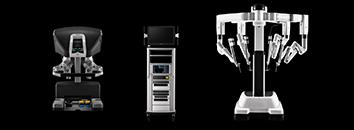Department of Surgical Gastroenterology
Minimal Access Surgery is a preferred surgical procedure instead of a large incision; it is accomplished with one or more small incisions. The surgeon goes through a small incision into a body cavity through a telescope with a video camera. Then the surgeon looks at the surgery on a television monitor. Many similar small incisions are made, through which the surgical instruments are placed and will do the surgery with those small incisions. Through watching magnified photographs on a monitor, the surgeon observes and operates on the area in question.
At Gleneagles Hospital, we are one of the best hospitals for Minimal Access Surgery in Hyderabad. Our latest technology and facilities will provide the patient with all they require, and our group of doctors will treat patients with the utmost care and will make sure they can lead a better life. Minimally Invasive Surgery is our practice for both inpatient and outpatient procedures, including procedures such as Gallbladder removal (Cholecystectomy), Gastroesophageal Reflux Disease (GERD) treatment (Fundoplication), Appendectomy, Hernia, and Spleen Removal.
Gleneagles Hospital, Hyderabad is committed wherever possible to performing surgical procedures using reduced accessible procedures to allow patients to experience faster recovery and fewer post-surgical complications. As such, in the full range of surgical specialities, the hospital has become a pioneer in Laparoscopic and Endoscopic Surgery. Doctors at Gleneagles Hospital include many of the country’s most experienced and professional doctors.
We are one of the best hospitals for Minimally Invasive Surgery in Hyderabad and provide our patients with the best treatment available. We have among us the best doctor in Hyderabad to perform the surgeries. At Gleneagles Hospital, the Minimally Invasive Surgery team has vast experience in innovative procedures that can help reduce patients’ periods in the hospital, minimize surgical bruising, and return patients to their daily activities.
Gleneagles Hospital provides quality care and meets the needs of patients. The care given by us is accessible, cost-effective, and comfortable. A solid infrastructure is well-suited for the hospital. It has a well-kept team that conducts different tests linked to minimally invasive surgery. Senior doctors are training the staff and providing patients with the best service, making us one of the best Minimally Invasive Surgery hospitals in Hyderabad.
- What is considered Minimally Invasive Surgery?
Minimally Invasive Surgery is a preferred surgical procedure instead of a large incision; it is accomplished with one or more small incisions. Endoscopy is a minimally invasive method for diagnosing tissues, examining anomalies, and taking biopsies.
- Is Minimally Invasive Surgery safer?
The doctors use a range of techniques in Minimally Invasive Surgery to operate with less damage than with open surgery. Generally, Minimally Invasive Surgery is linked with less discomfort, shorter stay in the hospital, and fewer side effects.
- Which is the best hospital for Minimally Invasive Surgery in Hyderabad?
Gleneagles Hospital, Lakdi-ka-pul, Hyderabad is one of the best hospitals for Minimally Invasive Surgery for both benign and malignant cases in Hyderabad which provides the patients with the best treatments. The Minimally Invasive Surgery team has vast experience in such procedures which helps to reduce the patient’s periods in the hospital and minimise surgical bruising.
FAQ
Why Choose Us
-
PATIENT EXPERIENCE
Your care and comfort are our top priorities. We ensure that the patients are well informed prior to every step we take for their benefit and that their queries are effectively answered.
-
LATEST TECHNOLOGY
The Gleneagles Hospitals' team stays up to date on the advancements in medical procedures and technologies. Experience the Future Healthcare Technologies now at Gleneagles Hospitals.
-
PROVIDING QUALITY CARE
Strengthening lives through compassionate care, innovative therapies and relentless efforts. It reflects in the DNA of our passionate team of doctors and dedicated clinical staff.










